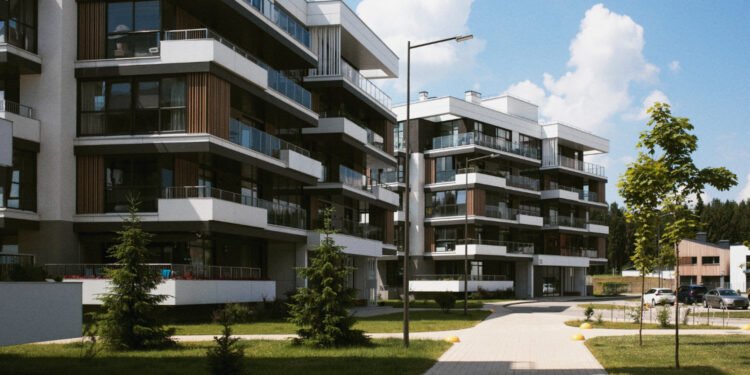The right landscaping for your property is important to increase the property value. Also, it’s equally crucial to consider the well-being of the trees on your property while landscaping. Trees add beauty and shade to outdoor spaces with numerous environmental benefits. So, during landscaping the yard, you must ensure that trees thrive in the yard.
And for that, you must know the proper tree-friendly landscaping ideas. You should always plant native trees, determine the right placement carefully and prune appropriately. Also, for tree plantation, be careful about compaction and irrigation. For more info, read this article.
Top 7 Tree-Friendly Landscaping Ideas:
Tree plantation and property landscaping go hand-in-hand. When you do both jobs appropriately, it will elevate the look and value of your home and property.
Choose Native Trees and Plants
The first step in creating a tree-friendly yard is to pick the right tree for it. You should opt for native species.
Native tree species are adapted to the local climate, soil, and pests. It makes them more resilient and easier to maintain. Also, native trees require less water and fertilizer. It will further reduce the environmental impact of landscaping efforts.
Additionally, native trees and plants provide food and shelter for local wildlife. It will enhance proper biodiversity and invite birds to make your home even more eco-friendly. Also, during tree plantation, you must ensure the trees complement each other.
You may choose a monochrome appearance or prefer planning plants and flowers to create a rainbow effect.
Proper Plant Placement
The tree’s location plays a significant role in its health and longevity. So, it’s crucial to determine where you plant trees and other vegetation.
- You should consider the mature tree size to decide on their placement.
- Large trees, such as Oak or Cider, too close to houses or other structures may expand their roots and branches. It will cause damage to the property. So, they should be 10-20ft away from the structures.
- Moreover, avoid planting trees in areas with poor drainage. This can lead to root rot and other health issues.
The key is to plan your landscape layout carefully. Ensure to provide adequate space and optimal growing conditions for trees when they grow enough and old. Click here to know how much does stump grinding cost?
Mulch Mindfully
Mulch is an essential part of tree-friendly landscaping. It will retain moisture, suppress weeds, and regulate soil temperature. However, it’s crucial to apply mulch correctly.
- Use organic mulch such as wood chips, straw, or shredded leaves.
- Apply a layer of mulch around the base of the trees
- You must keep it away from the trunk to prevent rot.
- Also, always ensure the mulching depth is around 2 to 4 inches
- You should also regularly replenish the mulch to maintain its effectiveness
The right mulching will help the tree grow better, faster and healthier.
Prune with Care
Proper pruning is essential for tree health. It will help the tree limbs grow better and steadier. On the other hand, improper pruning can harm trees. It will also make them more susceptible to disease and pests.
When pruning, focus on removing dead, damaged, or diseased branches. You might hire a professional arborist for major pruning jobs. The arborist will ensure the proper techniques and equipment to prune the tree safely.
The key is to prune the tree regularly with light pruning. Technically, you should only prune 20% to 25% of the tree at a time. It will maintain the tree’s shape and promote healthy growth.
Implement Efficient Irrigation
We all know the importance of proper watering for trees, especially during dry spells. For residential landscaping, many homeowners rely on a sprinkler system. It will water the entire yard uniformly.
However, arborists suggest using soaker hoses or drip irrigation around trees. These methods deliver water directly to the tree’s root zone. So, the soaker will reduce water wastage and ensure the tree receives adequate moisture.
Also, you should be mindful not to overwater. Or it can lead to root problems and tree stress.
Protect Against Compaction
Soil compaction can be detrimental to trees. It mostly restricts root growth as it reduces the oxygen flow and nutrients to the roots. Ultimately, the tree roots will start dying due to a lack of nutrients and oxygen.
Henceforth, you should avoid heavy machinery or foot traffic around the root zone to prevent soil compaction. You can use mulch or ground covers to create paths and designated areas in the yard. It will channel foot traffic away from the tree roots.
Moreover, proper soil aeration techniques will mitigate soil compaction issues. At times, you can just dig the soil top to avoid compaction.
Avoid Harsh Chemicals
Chemical pesticides and fertilizers can harm trees and the environment. So, you must try not to use pesticides and manufactured fertilizers.
Instead, you should opt for natural and organic alternatives. These natural fertilizers are less harmful to the ecosystem. You may choose the Integrated Pest Management (IPM) techniques. It will help you control pests while minimizing the use of chemicals.
Additionally, avoid using excessive amounts of fertilizer. Applying too much fertilizer can lead to nutrient imbalances and damage to tree roots.
Conclusion
Creating a tree-friendly landscape is both aesthetically pleasing and environmentally responsible. And for the proper landscaping, you might choose native and complementary plants. Next, provide proper care, place and maintain the trees with the right technique.
All these will ensure that trees thrive to contribute to a healthier and more sustainable outdoor environment.
Also Read Interesting Articles At: Ebeak.


















